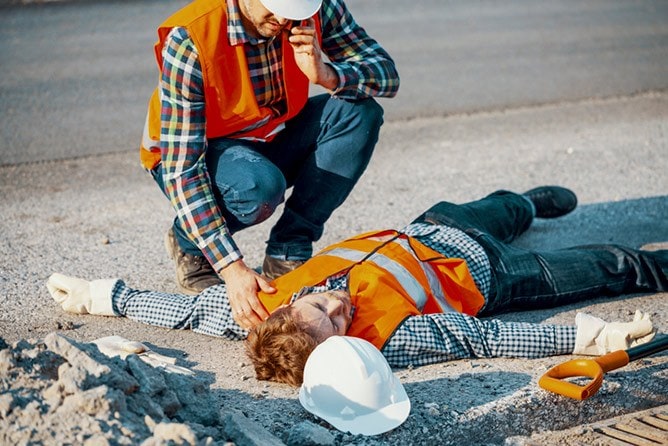What Is The Definition of a Workplace Hazard?
Workplace hazards occur when the working environment poses a risk of injury, disease, or death to an employee, we have first aid at work courses in our Belfast and Glasgow training centres. Hazards can arise from a variety of factors in the workplace, including equipment, hazardous materials, unsafe working methods, and general human behaviour.
Hazards are generally more dangerous for lone employees since they are less likely to get immediate backup from co-workers. Our Knowledge Hub guides look at the risks faced by lone workers in a variety of industries, including housing, utilities, field services, local governments, charities, and health.
Types of Hazards in the Workplace
There are six types of workplace hazards: safety, biological, physical, ergonomic, chemical, and workload.
1. Safety
Workplace hazards can impact any employee, but it is those that are working with machinery or posted to a building site that have a higher likelihood of being impacted. Slipping, tripping and falling, alongside operation dangerous or large machinery and electrical hazards are all safety concerns. The utilities industry is the sector that is most affected by safety risks. The health and safety executive reported people that were killed at work between 2018 and 2019, by moving vehicles and dangerous machinery.
2. Biological
Biological workplace hazards are exceptionally dangerous. These hazards apply to people that through working with animals, people and infectious plant materials are exposed to dangerous substances and diseases associated with them.
Hospitals, building sites and laboratories are just some that come to mind. There were 2,523 mesothelioma deaths recorded in 2017 as a result of previous exposure to asbestos.
3) Physical
Sunlight and UV rays, loud noise, radiation are among the dangerous physical conditions that can affect an employee when continuously exposed. Not a huge issue in the UK, but working in the sun is the most vulnerable exposure for an employee. Loud noises would come in a close second, with the HSE reporting that around 23,000 employees suffer hearing impairments directly related to their job.
4) Ergonomics
Ergonomic hazards are those that place a huge strain on their body when carrying out their work, this can range from manual labour jobs (high risk) to office jobs, injury caused from long periods of time sitting.
This can be avoided by proper training in manual roles and through properly adjusted workstations in offices. These injuries are likely to show themselves over time rather than in a single moment and are harder to identify. The HSE recorded that 21% of the reported non-fatal injuries in the workplace were due to handling or lifting heavy objects (2017/18).
5) Chemical
Those that have exposure to hazardous liquids, flammable gases and solvents are the most vulnerable to chemical hazards in the workplace. Engineers, cleaning staff and field employees are the most likely to be affected. The symptoms of exposure can range from skin irritation, respiratory issues and in certain circumstances – death. There are around 100 cases of carbon monoxide poisoning each year in the UK.
6) Workload
Workload hazards come in many forms, from aggression and violence in the workplace, right down to workload. Anything that causes an employee stress or strain is considered a workplace hazard. Any role can experience this hazard, but hose people that work at home or alone may find it difficult to express this. A labour force study found that over 40% of the 1.4 million employees that were surveyed displayed signs or work related stress, depression or anxiety.
There are so many hazards in all workplaces, they all may not ‘appear dangerous’, but some can be ‘silent killers’. It is important to understand all of the workplace hazards in order to best safeguard your business and your employees. We have been providing first aid training across Northern Ireland for decades, have recently expanded to bring first aid courses to Glasgow and are proud to support local businesses in training them for a safe workplace.
Remember that not every situation that requires first aid is apparent, we also run a course on mental health first aid that is becoming an increasingly popular course, making a difference in workplaces across the nation.



